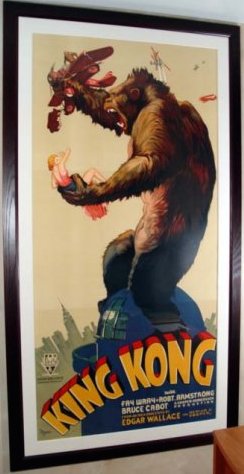Blank Wall Challenge - The Multiple Artwork Solution
Whether you are an existing homeowner or a new homeowner, we understand how daunting a blank wall can be! We have a few suggestions that can help you fill in those blanks. Large empty wall spaces are often handled best by grouping of several pieces of artwork together. Several images can offer you a wider color palette to decorate from and are often more pleasing to the eye than one oversize or undersized piece of art in the same space.
Many homeowners avoid multiple pieces of art hanging together because they can’t envision how they might work in tandem. The best way to understand how your new art pieces will look together is to make mock-up of the display using blank pieces of paper cut to the size of the pieces you want to hang.
We recommend starting your configuration at eye level for an initial centerline 62’’-68” from the floor. You’ll want a slightly lower position for larger pieces and slightly higher position for your smaller ones. Also consider what type of room your pieces will be hanging in. An entryway might feel better with a slightly higher centerline, as you will mostly view the art while walking through it. A dining area is an example of a room where you would want to lower your centerline because viewers will usually be seated in that environment.
Next take the blank paper mock-up of your most dominant piece of artwork and tape this piece in the middle of your centerline. The centerline should bisect the artwork at its center (i.e. around the horizon line on a landscape or the mid section of a portrait.) Now select the other paper mock-ups and arrange them around the center art piece using these tips!
- Try not to cover more than two thirds of the blank wall space.
- Use larger pictures on longer walls and smaller pictures on short walls.
- Art pieces should be at least four to 12 inches above a sofa back.
- Dark artwork should be placed farther away from furniture than lighter pieces.
- Directional compositions should face the center.
- Portraits should usually face each other.
- Use a stair step configuration only on stairway walls.
- Check for visual weight. Keep heavy pieces toward the center.
- Don’t hang your pictures too high. This is often called tall-husband syndrome!
- Make sure the center or most dominant picture relates in some way to the furniture along the wall it hangs.
- Make sure that your art framing matches accents in the artwork. Don’t frame your art to match the furniture.
- Frames used in a grouping need only compliment each other; they do not necessarily need to match.
- Always take into consideration lamps, plants and other objects that will be viewed along the wall where your art will hang.
